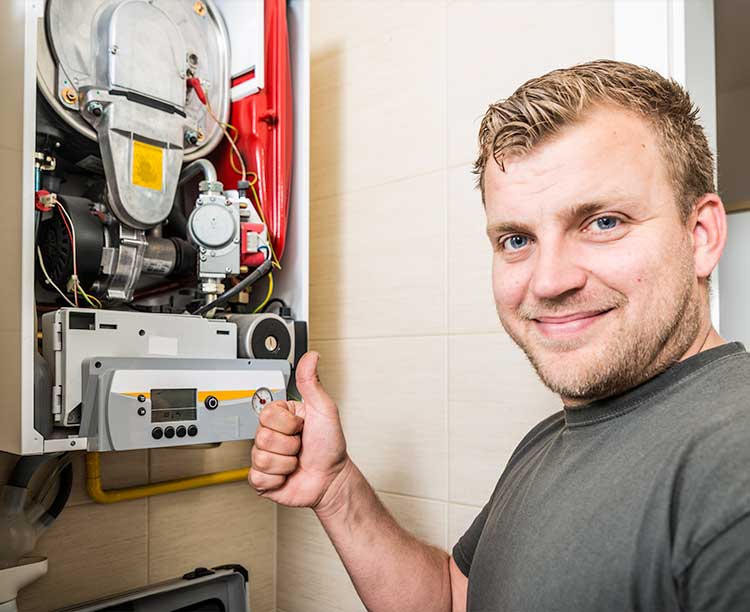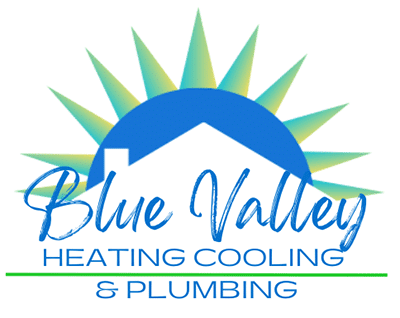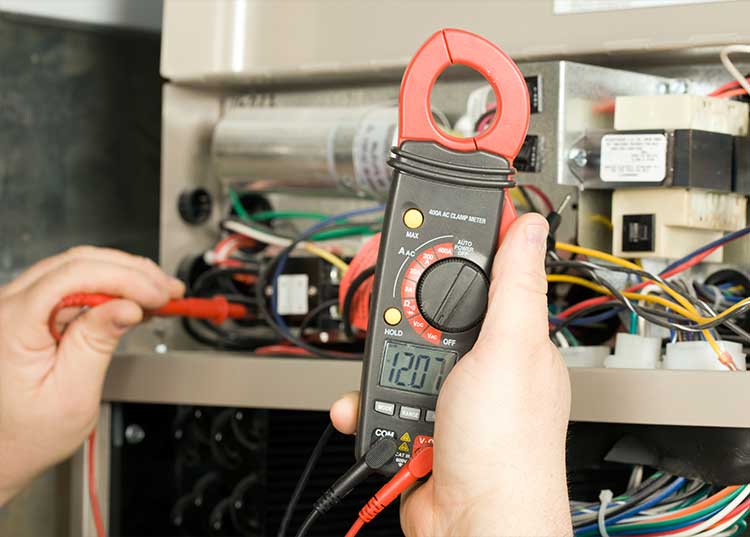Furnace Maintenance: The Ultimate Checklist for Winter
When the Colorado cold sets in, the last thing you want is a furnace that stops working in the middle of the night. Regular furnace maintenance keeps your system reliable, safe, and efficient throughout the heating season. This guide breaks down everything homeowners should check before winter hits—plus professional services that make all the difference.
Skipping furnace maintenance might save a few dollars upfront, but it can cost much more later in repairs or energy waste. Over time, dust, debris, and mechanical wear reduce performance and increase utility bills. Regular tune-ups help:
- Improve heating efficiency and comfort
- Extend your system’s lifespan
- Prevent unexpected breakdowns
- Lower long-term energy costs
- Keep your indoor air clean and safe
Professional service from Blue Valley Heating & Cooling ensures your heating system runs smoothly before extreme temperatures arrive. Visit our heating maintenance services page to schedule a tune-up before winter.
The Complete Furnace Maintenance Checklist
1. Change or Clean the Air Filter
A dirty air filter restricts airflow, forcing the furnace to work harder. Replace it every one to three months, especially during heavy use. Blue Valley Heating & Cooling can recommend the right filter for your system and replace it during your seasonal furnace maintenance visit to ensure optimal performance.
2. Inspect the Thermostat
Make sure your thermostat reads accurately and responds quickly to temperature changes. If you’re noticing uneven heating, it may be time for recalibration or an upgrade. Our technicians can test and calibrate your thermostat or install a smart thermostat to improve control and energy efficiency.
3. Clean Vents and Registers
Blocked vents cause uneven heating. Keep them free of dust, furniture, and rugs so warm air can circulate efficiently. Blue Valley’s experts inspect airflow during every furnace maintenance visit to ensure no obstructions reduce comfort or efficiency.
4. Examine the Blower Motor
A clean blower motor ensures proper air circulation. If it’s making strange noises, a technician should inspect it during furnace maintenance. Our team cleans and lubricates the blower assembly to keep air moving evenly through your home.
5. Inspect Electrical Connections
Loose or corroded wiring can cause malfunctions or even fire hazards. Professional technicians check for safe electrical operation during a seasonal tune-up. Blue Valley’s licensed technicians perform detailed electrical inspections as part of every furnace maintenance appointment.
6. Lubricate Moving Parts
Lubrication prevents friction and extends the life of components like the motor and fan. Blue Valley includes this essential service in our annual maintenance package to keep your system running smoothly all winter.
7. Test Carbon Monoxide Detectors
Carbon monoxide leaks can be deadly. Replace batteries and test detectors every fall before turning on your furnace. We also test for carbon monoxide leaks during maintenance to ensure your home remains safe.
8. Check the Pilot Light or Ignition System
A weak or flickering flame could indicate a gas issue or clogged sensor. If you’re unsure, contact our furnace repair team for a professional inspection. Blue Valley’s technicians safely inspect and clean ignition systems so your furnace starts reliably.
9. Inspect Heat Exchanger
Cracks in the heat exchanger can release carbon monoxide. Only a certified HVAC technician should inspect and replace damaged parts. Our professionals use advanced diagnostic tools to check the heat exchanger for damage and ensure your safety.
10. Evaluate System Performance
Run your furnace and check for consistent heating. Uneven temperatures or short cycles might point to airflow or thermostat problems. Blue Valley Heating & Cooling performs complete system performance checks and efficiency tests during each furnace maintenance visit.

Professional Furnace Maintenance Services
DIY care is important, but some tasks should be left to professionals. When you schedule furnace maintenance with Blue Valley, we provide a detailed inspection and tune-up process that includes:
- Checking safety controls and gas pressure
- Inspecting and cleaning burners
- Measuring system airflow and efficiency
- Tightening electrical connections
- Verifying thermostat calibration
Each of these steps helps ensure safety, reliability, and maximum energy savings. Explore our heating services page for full details on maintenance and repair options.
Benefits of Regular Furnace Maintenance
Regular furnace maintenance offers more than just peace of mind. It can reduce your energy consumption by up to 20% and prevent 85% of heating failures that occur due to neglect. Here’s what you gain from staying consistent:
- Improved Efficiency: A clean system heats faster and more evenly.
- Lower Bills: Less strain means lower energy use.
- Longer Lifespan: Routine service prevents unnecessary wear.
- Better Air Quality: Clean filters and vents reduce dust and allergens.
If your home hasn’t had a check-up this season, schedule one through our HVAC inspection checklist guide. It explains how professional inspections help identify issues before they turn into costly repairs.
Signs Your Furnace Needs Immediate Service
Even with regular maintenance, problems can appear unexpectedly. Watch for these signs that indicate your system may need professional repair:
- Strange noises like banging or squealing
- Uneven heating across rooms
- Short cycling (frequent starts and stops)
- Rising energy bills
- Yellow or flickering pilot light
If you notice any of these, schedule a repair right away through our furnace repair services. Prompt attention prevents further damage and costly downtime.
How Furnace Maintenance Saves You Money
Regular furnace maintenance can pay for itself by improving performance and lowering utility costs. According to the U.S. Department of Energy, heating and cooling make up nearly half of a home’s energy use. Even a small efficiency boost can significantly reduce your bills.
Blue Valley’s technicians ensure that every component works at peak performance. They also help identify early warning signs that can prevent expensive repairs later. Pairing your annual tune-up with seasonal HVAC maintenance plans gives you the best return on investment.
When to Schedule Furnace Maintenance
The best time for furnace maintenance is early fall, before you need steady heating. However, if you’ve missed that window, scheduling mid-season is still beneficial. A professional tune-up ensures your furnace keeps running smoothly through the coldest months.
To make scheduling easy, visit our contact page or check current special offers for seasonal discounts.
FAQs About Furnace Maintenance
1. How often should I schedule furnace maintenance?
You should have your furnace inspected and serviced once per year—preferably before winter. Annual maintenance allows technicians to spot and fix small issues before they become expensive repairs. A clean, tuned furnace also runs more efficiently, saving money each month.
2. What happens if I skip furnace maintenance?
Neglecting regular service can lead to reduced performance, higher utility bills, and unexpected breakdowns. It may also void the manufacturer’s warranty. Dirt and dust buildup cause components to wear faster, which shortens your furnace’s lifespan.
3. Can I perform furnace maintenance myself?
Homeowners can handle basic tasks like changing filters, vacuuming vents, and testing carbon monoxide detectors. However, inspections involving electrical components, gas valves, and heat exchangers should always be left to professionals. Visit our heating maintenance services to schedule expert help.
4. Does furnace maintenance improve air quality?
Yes. A clean furnace and duct system minimize dust and allergens circulating through your home. Proper airflow and filtration can improve indoor comfort, especially during the dry winter months.
Keynotes
- Regular furnace maintenance can increase efficiency by up to 20%, according to the U.S. Department of Energy.
- 85% of HVAC system failures are linked to poor maintenance.
- Replacing your air filter every 1–3 months can lower your furnace’s energy use by 5–15%.
Learn more about safe and efficient heating practices from our heating maintenance specialists.



